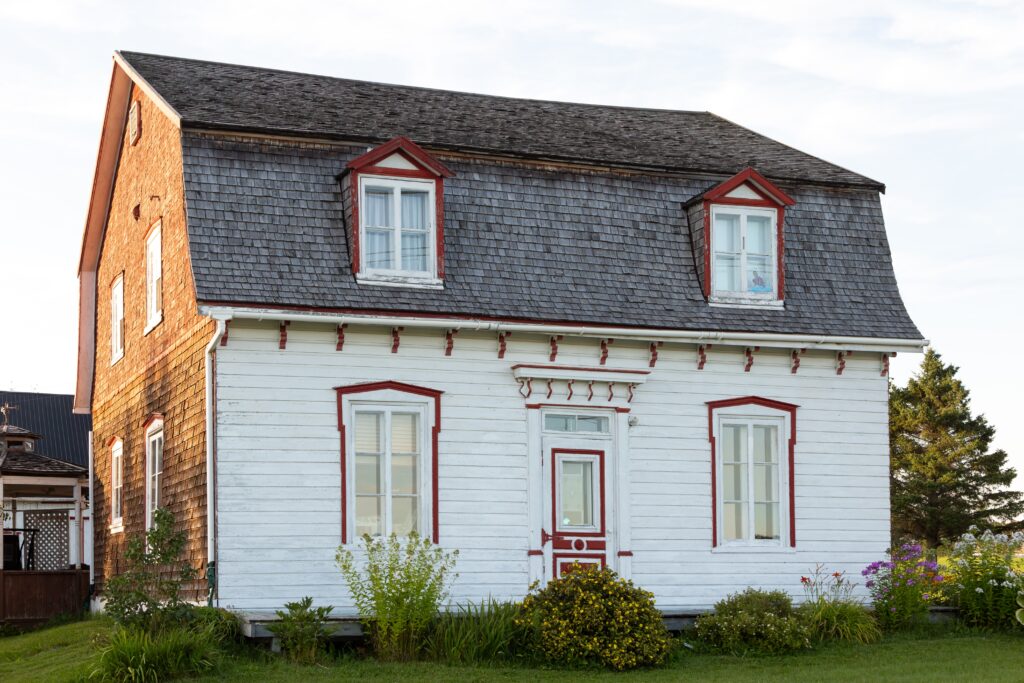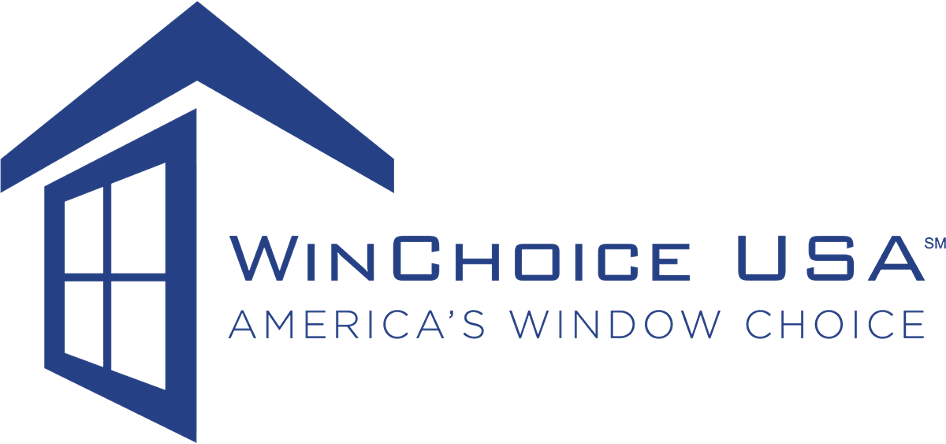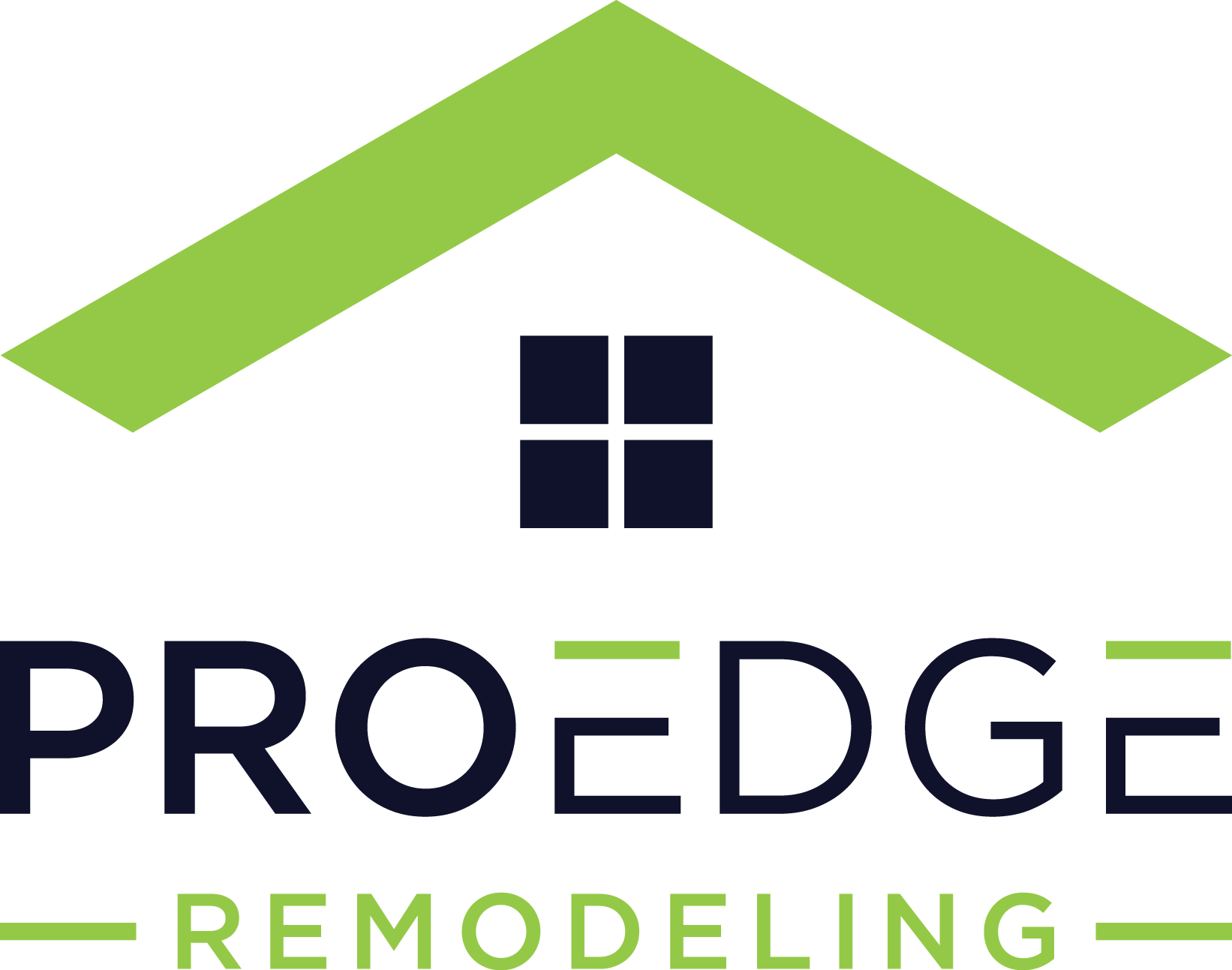Mansard Roof Guide

Thinking about switching up your roof style or building something with a bit more flair? A mansard roof might be just what your home needs. Known for its distinct four-sided design with double slopes, the mansard roof brings a touch of old-world elegance with the practicality of extra living space.
It’s a favorite in French-inspired architecture but has made its way into modern builds thanks to its stylish look and good use of space.
In this guide, we’ll break down what a mansard roof is, why it’s worth considering, and what you need to know before adding one to your home.
Table of Contents
What Is a Mansard Roof?
A mansard roof is a four-sided roof design that features two slopes on each side. The lower slope is steep and often includes windows or dormers, while the upper slope is much shallower and less noticeable. This double-slope structure doesn’t just look fancy, it’s also a clever way to create extra living or storage space under the roof without adding another full story.
The mansard roof has deep roots in French architecture, dating back to the 1600s. It’s named after François Mansart, a French architect who popularized the style during the Baroque period. While it started as a hallmark of grand Parisian buildings, the design made its way into homes across Europe and eventually to the U.S., where it became a staple of Second Empire-style homes in the 19th century.
Compared to more common roof types like hip and gable roofs, the mansard roof offers a unique blend of function and flair. A gable roof has two sloped sides that form a triangle, and a hip roof slopes down on all four sides—but neither gives you as much usable attic space as a mansard.
Then there’s the gambrel roof, which looks a bit similar but only has the double-slope on two sides. If you’re looking for a design that adds architectural character and opens up space inside, the mansard roof definitely stands out from the pack.
Key Features of a Mansard Roof
What makes a mansard roof instantly recognizable is its four-sided design, with two distinct slopes on each side. The lower slope is steep—almost vertical in some cases—while the upper slope is much more subtle, often barely visible from the ground. This clever setup gives the roof a unique profile that’s both dramatic and functional.
Another standout feature is the flat or low-pitched upper section. While most roofs have a noticeable peak, the top of a mansard roof is more subdued. That flat area can even be used as a small deck or rooftop garden in some modern designs, depending on local building codes and weather conditions.
One of the biggest advantages? Dormer windows and built-in attic space. Because of the steep lower slopes, mansard roofs create plenty of headroom, making it easy to turn that upper level into a livable space—such as an extra bedroom, home office, or even a cozy loft.
Pros of Choosing a Mansard Roof
There’s a reason mansard roofs have stayed popular over the years—they’re full of perks, especially if you’re looking for a mix of style and functionality in your home.
1. Maximized Attic Space
One of the biggest selling points of a mansard roof is all the extra space it gives you. Thanks to its steep lower slopes and relatively flat top, you’re not stuck with a cramped, awkward attic. Instead, you can turn that area into a full-blown bonus room. It’s like getting a hidden extra floor without the full cost of building one.
2. Versatile
Mansard roofs have a way of making a house look sophisticated and stylish—like it came straight out of a European architectural magazine. Whether your home is more traditional or you’re going for a modern twist, this roof style works well with a wide range of exterior finishes and window styles. Dormers, slate shingles, decorative trim—you’ve got options to play with.
3. Increased Property Value
Because mansard roofs add usable space and curb appeal, they can boost your home’s resale value. Buyers love the idea of extra square footage and a unique look, especially if the space is already finished. It’s a smart investment if you’re thinking long term.
4. Easy Expansion
Planning ahead? A mansard roof makes it easier to add another floor down the road. Since the design already includes space under the roofline, future expansions can often be done without major structural overhauls. So if your family grows or your needs change, you’ll have more flexibility to adapt your home without starting from scratch.
Mansard Roof Disadvantages and Considerations
While mansard roofs definitely have their perks, there are a few things to keep in mind before committing.
1. Higher Initial Cost
Mansard roofs certainly aren’t the cheapest option. Their intricate design and steep slopes require more materials, more labor, and more time to build compared to simpler roof styles. If you’re working with a tight budget, the upfront costs can be a bit of a shock. That said, many homeowners find that the added living space and long-term value make it worth the investment.
2. Maintenance & Repair Challenges
Because of their shape and structure, mansard roofs can be a bit tricky to maintain. For one, the flat or low-pitched upper section doesn’t shed water as easily as steeper roofs, which can lead to drainage issues if not properly designed.
Flashing around dormer windows and the many angles can also wear down over time, making it important to keep up with regular inspections and maintenance. Skipping it could lead to leaks and costly repairs.
3. May require special permits or HOA approval
Depending on where you live, adding or remodeling with a mansard roof might require special permits, especially if you’re increasing the height of your home or changing its overall profile. In addition, since mansard roofs stand out a bit more, some associations might have guidelines or restrictions you’ll need to navigate.
Mansard Roof Materials
One of the cool things about a mansard roof is that it plays well with a variety of roofing materials—so you’ve got some freedom to choose what fits your style, budget, and home design best. However, not all materials are created equal, especially when it comes to looks, durability, and cost.
Common materials used
You’ll often see mansard roofs covered in slate, asphalt shingles, metal, or clay tile. Each one brings a different vibe and set of benefits:
- Slate is a classic pick for mansard roofs—especially on historic or high-end homes. It looks elegant and can last a century or more, but it’s heavy and pricey.
- Asphalt shingles are the most budget-friendly option. They’re easy to install and come in a range of colors and styles. They don’t last as long as some other materials, but they’re a solid choice if you’re looking to save.
- Metal roofing (like standing seam or metal shingles) offers a sleek, modern look and is super durable. It’s great for shedding water and snow, which can help on the low-pitched upper part of a mansard roof.
- Clay or concrete tiles are another upscale option. They’re long-lasting and give your home a Mediterranean or European feel, but like slate, they’re on the heavier side and may require extra roof support.
Durability and Aesthetic Comparison
If longevity is your top priority, slate and metal are the front-runners—they can last 50+ years (and sometimes way longer with proper care). Asphalt shingles, while easier on the wallet, usually last around 20 to 30 years. Tile lands somewhere in the middle and can be incredibly durable, especially in warm, dry climates.
From a style standpoint, slate and tile are unbeatable for that old-world charm, while metal leans more contemporary. Asphalt gives you flexibility in design, but might not deliver the same wow factor.
Just keep in mind that these numbers can vary based on your location, roof complexity, and contractor rates. And since mansard roofs have steeper slopes and more detailing, labor costs can be higher no matter what material you choose.
Cost of Installing a Mansard Roof
While mansard roofs are undeniably beautiful and functional, they don’t come cheap. If you’re considering installing one, it’s good to know what to expect so you can plan and budget accordingly.
Average Cost
On average, installing a mansard roof can cost anywhere from $8 to $25 per square foot, but that number can climb depending on your material choice and how complex the build is.
That means for a 2,000-square-foot roof, you’re looking at anywhere between $16,000 and $50,000+.
Factors Influencing Price
There are a few things that can impact cost, including:
- Materials: Slate and tile are on the higher end, while asphalt shingles are more budget-friendly. Metal lands somewhere in the middle, depending on the style.
- Roof complexity: Mansard roofs have steep slopes, dormers, and more angles than simpler styles, which means more work and precision during construction.
- Labor: Because of the design complexity, you’ll need skilled roofers who know what they’re doing. This often comes at a higher hourly rate.
- Region: Prices vary depending on where you live—urban areas and places with high labor costs tend to have pricier roof installations.
- Existing structure: If you’re retrofitting a mansard roof onto an existing home, there could be structural changes or reinforcements needed, which adds to the bill.
Tips for Budgeting & Getting Quotes
- Get multiple estimates: Always shop around. Reach out to at least three reputable contractors and ask for itemized quotes so you can compare apples to apples.
- Ask about materials: Some roofers get bulk deals on certain materials—ask if they have a preferred supplier that could save you money.
- Factor in permits: Don’t forget to include the cost of permits, especially if you’re altering the structure of your home or live in an area with strict building codes.
- Plan for surprises: Set aside an extra 10–15% of your budget for unexpected expenses.
- Check references and reviews: Cheaper isn’t always better. Make sure the contractor you choose has experience with mansard roofs specifically, since they’re a bit more specialized than your average roof job.
Is a Mansard Roof Right for Your Home?
So, you’re liking the look and function of a mansard roof—but is it the right fit for your home? While it has a lot going for it, a mansard roof works better in some situations than others. Let’s break it down.
Ideal Home Styles
Mansard roofs shine on certain architectural styles. If you’ve got (or are building) a Colonial, French Country, Victorian, or Second Empire-style home, you’re in the perfect zone—this roof will complement those designs beautifully. It also works well on custom modern builds looking for a bold, European-inspired edge.
That said, if your home has a very minimal or ultra-modern vibe, a mansard roof might feel a little out of place unless it’s designed with clean lines and simplified detailing to match. They tend to stand out—so if your neighborhood has mostly ranch-style or craftsman homes, be ready for your house to look a bit different.
Climate Considerations
Mansard roofs aren’t one-size-fits-all when it comes to climate. The low-pitched upper section can be a challenge in areas with heavy snowfall or frequent rain, since water and snow don’t slide off as easily.
If you live somewhere with a lot of precipitation, make sure your roofer includes proper drainage systems and waterproofing details—especially around the dormers and flashing.
On the flip side, in warmer or drier climates, a mansard roof holds up well and gives you the added perk of extra insulation and attic ventilation, which can help with cooling.
Checklist
Here’s a quick gut-check to help you decide:
- Do you want more living space without building a full extra story?
- Is your home’s architectural style compatible with a French-inspired or elegant aesthetic?
- Are you okay with higher upfront costs in exchange for long-term value?
- Are you located in an area where snow and rain drainage can be properly managed?
- Will your HOA or city permit a roof design that changes the structure’s height or appearance?
- Are you working with a contractor who has experience building complex roofs?
Maintenance Tips for Mansard Roofs
Like any good home feature, a mansard roof needs care to keep it looking sharp and working properly. Because of its unique shape and multiple slopes, it’s got a few more spots to check than your average roof.
Routine Inspection Tips
Your first line of defense is a visual check. You’ll want to keep an eye on key areas like the eaves, flashing, and dormer windows. These spots tend to be the most vulnerable to leaks, especially after heavy rain or snow.
Look for signs of wear, cracked seals, missing shingles, or anything that just doesn’t look right. Also, check for clogged gutters and downspouts—water backup can cause serious damage over time, especially on that flatter upper section of the roof.
Seasonal Care
- Spring & Fall: Give your roof a once-over when the seasons change. Clean out the gutters, remove any debris from the upper flat section, and trim back nearby tree branches that could scrape or drop leaves.
- Winter: If you live in a snowy area, keep an eye out for ice dams and excessive snow buildup on the flat top. You don’t want all that weight or water causing trouble.
- Summer: Heat can wear down roofing materials over time, so do a quick check for any signs of curling, fading, or damage from sun exposure—especially if you have asphalt shingles.
When to Call a Roofing Pro
With all the angles, dormers, and elevation changes, it’s best to leave serious repairs or inspections to a pro. Call in a roofing contractor if you notice:
- Leaks or water stains in the upper rooms or attic
- Loose or missing shingles
- Damage around dormer windows
- Sagging or pooling water on the upper section
- Any signs of rot or mold near the eaves or fascia
Having a professional inspect your mansard roof once a year (or after a big storm) is a smart move. It keeps small issues from becoming big (and expensive) problems—and helps you get the most out of your investment.
Conclusion
All in all, a mansard roof is a great option if you’re looking to combine classic style with smart functionality. You get extra living space, a unique and elegant look, and the potential to boost your home’s value.
But like anything in home improvement, it’s not without its challenges. The higher upfront cost, extra maintenance, and need for skilled installation are definitely things to think through.
If you’re seriously considering a mansard roof—whether for a new build or a renovation—it’s worth connecting with a roofing expert or architect. They can walk you through your options, help you figure out the best materials for your climate and budget, and make sure the design works with your home and local building codes.
Additional Roofing Resources

Anna has over six years of experience in the home services and journalism industries and serves as the Content Manager at MyHomePros.com, specializing in making complex home improvement topics like HVAC, roofing, and plumbing accessible to all. With a bachelor’s degree in journalism from Auburn University, she excels in crafting localized, comprehensive guides that cater to homeowners’ unique needs. Living on both coasts of the United States has equipped her with a distinctive perspective, fueling her passion for turning any house into a cherished home through informed, personalized decision-making.








